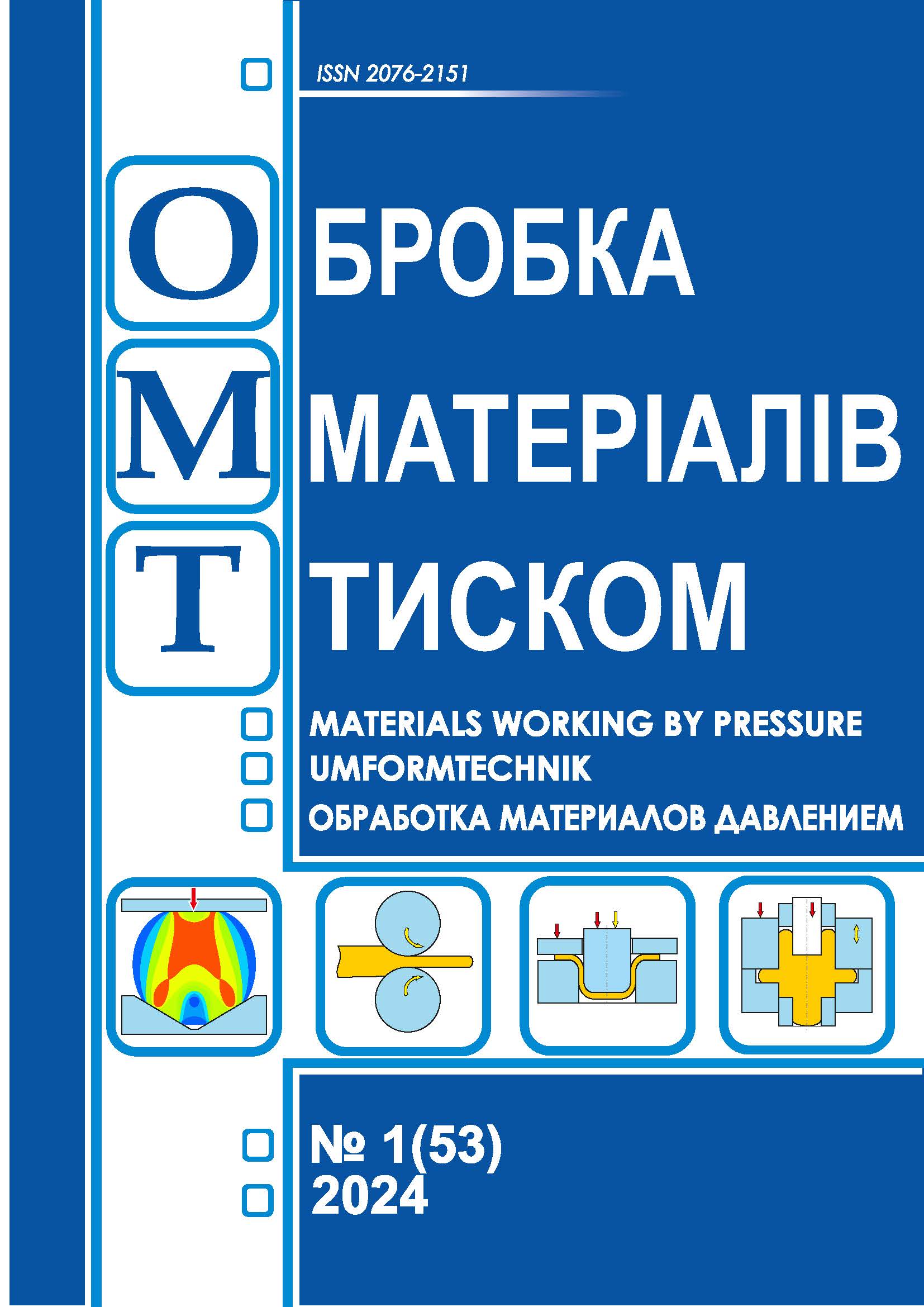Development of a model for accounting for steel softening for modeling multi-transition hot stamping processes
DOI:
https://doi.org/10.37142/2076-2151/2024-1(53)3Keywords:
stamping, hot working, stress, power parameters, strengthening, relaxation, MSE, yield curve.Abstract
Markov O., Molodetsky V., Zinsky V., Aldokhin M., Musorin A.
Development of a model for accounting for steel softening for modeling multi-transition hot stamping processes.
Technological processes of multi-transition hot die forging require optimization of technological modes to reduce the force parameters of deformation processes. This is due to a decrease in energy costs during the serial production of large-sized stampings weighing from 20 to 100 kg. The force parameters of multi-transition stamping processes can be reduced by accurately determining the level of stresses that arise in the workpiece during its deformation. Stamping of large-sized forgings in mass production is an expensive process, therefore technological processes require finite element modeling and analysis of the stress state of the workpiece metal and force deformation modes at each transition. This modeling requires an accurate determination of the stress state of the workpiece during stamping. Based on an analysis of the recent literature, it was determined that the main method for modeling the stamping of large-sized forgings was carried out using the finite element method (FEM). Mainly attention was paid to changing the shape of the workpiece during stamping using new methods and the influence of the shape of the deforming tool on the distribution of deformations in the body of the workpiece. Known software packages for simulating hot stamping processes based on FEM cannot take into account the processes of material hardening that occurs during high-temperature deformation. This is due to the lack of models connecting strain rates and stress components to take into account softening processes. Taking into account the relaxation of internal stresses will allow us to establish the corrected state of the workpiece metal and the power characteristics of stamping operations. The article presents that when calculating stamping operations, one should take into account not only the processes of steel hardening, but also the softening of the material that occurs in the processes of hot multi-transition stamping. Based on Maxwell's elastic-viscous model, the relationship between the strain rate tensor and stress was determined. This model can take into account the relaxation of internal stresses. The established analytical model was tested experimentally on S-60 steel at hot stamping temperatures. It has been proven that the installed model reproduces the rheology of steel during hot stamping by 90...95%. The established analytical connection between stress tensors and strain rates made it possible to carry out direct numerical calculations of multi-junction stamping processes without additional iterative MSE procedures. This made it possible to more accurately take into account the actual characteristics of steel, which significantly reduced the number of iterations and, accordingly, the modeling time.

